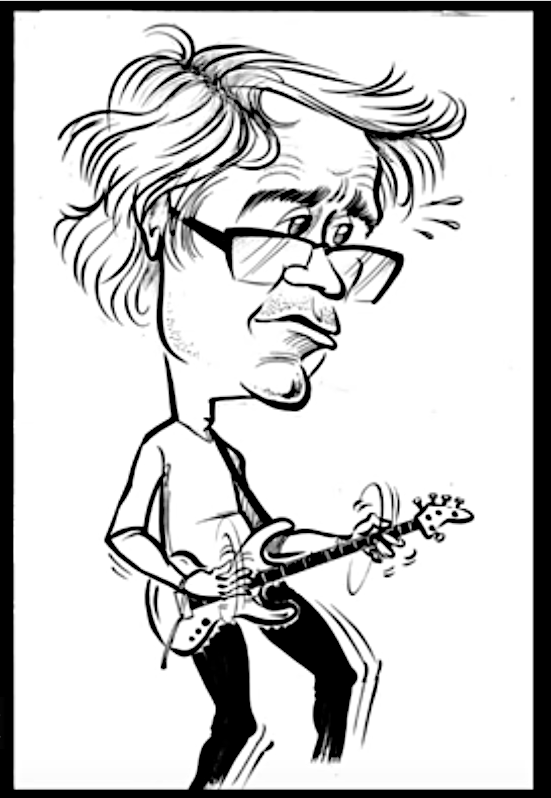
Used by permission
Is it all musicians, or just guitar players? On average, most of us make faces when we play. Many of us who do so play very well while doing it, and many shrug it off, accept it – and when the music is beautiful, audience and performer are both more likely to be unconcerned, if not celebratory of faces approaching the downright ugly.
Alas, not I. Early in my career people told me my faces were endearing, but as I grew older I noticed how they’d accompany tension and anxiety. Even a lunatic smile has more appeal than a painful grimace! And it never escaped me that they tended to closely precede mistakes. Which added to my tension and anxiety. And so on.
I couldn’t help feeling “guitar faces” that were “endearing” well into my 30s had uh… lost their charm by the time I reached my 50s. There are even some old photos I want very much to keep from the gossip rags!
When I thought about my stage fright in my 20s and 30s I was already aware of two things. I said my negative self talk could always shout louder than the DJ, and that when disasters (a flat bend, or missing a stompbox cue qualified) I noticed I’d been holding my breath.
“People should try to go deeper into the instrument, and transcend its actual construction. To do that, you have to make ugly faces, pucker up your butt, and get to that note. You need to put different levels of brutal freakin’ force behind your playing. The next thing you know, you start getting into the territory that Stevie Ray Vaughan and Jeff Beck inhabit. Let’s face it, Stevie made some pretty ugly faces. And, hopefully, so do I.
Carlos Santana
When I make those faces, I tense up in the shoulders and face, and start holding my breath. When I run out of breath I start to tense up even more; mistakes are imminent, and a vicious cycle is under way.
On top of all that, over the almost 20 years between university and teaching music and getting back into the books and scales during COVID-19 lockdown my playing naturally eroded. I found myself struggling to play things I know I’d played well.
The faces were changing, too. It’s right around that time my good friend Alma Roussy did the caricature of me you see above. She didn’t have to exaggerate the guitar face — it was already a caricature!
Breathing — from the diaphragm…
…and through the nose, stroking the Vagus nerve — can quell your sympathetic nervous system’s “fight or flight” response, where stage fright lives. Meditating, “following” the breath, has been key to my breaking years of bad practice habits.
It led to me to discover muscles I didn’t know I had, in my forehead and face, and how to relax them. Through controlled breathing I’ve gained much greater control over anxiety — and, no disrespect to Carlos — prettier, less contorted guitar faces.
Controlled breathing is sure to feature a lot in this blog. I guess I’m exploring exactly what kinds of control I can realistically gain over my autonomic nervous system, and trying — as always — to play better! It’s a work forever in progress. If any of that sounds interesting you might just be as off the wall as I am. Please feel free to check in from time to time to see how I’m doing. Say hi! Cheers!
Next: Meditation After Neurofeedback



Leave a Reply